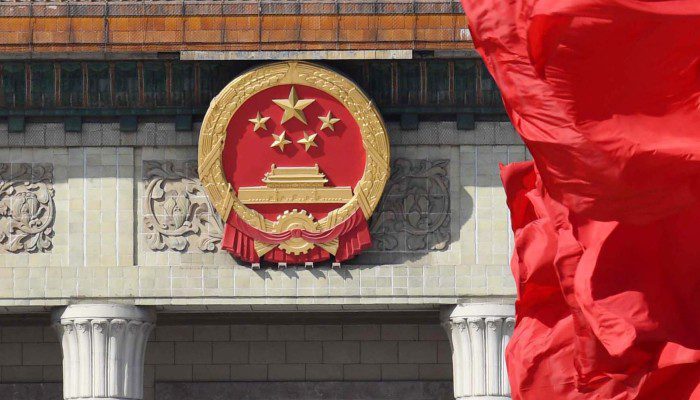In the ever-evolving landscape of global trade, Chinese manufacturers find themselves navigating choppy waters. Headlines trumpet tariffs, diversification strategies, and the rise of alternative manufacturing hubs. Yet beneath these surface disruptions, fundamental economic realities suggest Chinese suppliers have substantial reasons for continued optimism. While adaptation is necessary, the structural advantages that positioned China as the world’s factory remain largely intact.
The Persistent Manufacturing Ecosystem Advantage
The manufacturing ecosystem China has built over decades represents a competitive moat that competitors cannot easily replicate. This isn’t merely about factories and equipment—it’s about the dense network of specialized suppliers, skilled workers, and intricate supply chains that have developed organically over decades. When Western companies contemplate alternatives, they quickly discover that relocating production often means recreating entire industrial ecosystems rather than simply changing factory addresses.
A European electronics manufacturer recently discovered this reality when attempting to shift production of a moderately complex device to Southeast Asia. While basic assembly could be transferred relatively quickly, the specialized component suppliers, testing facilities, and technical expertise required for full production remained stubbornly rooted in China. Eighteen months and substantial investment later, they had managed to shift only about 40% of their production chain.
The European Predicament
While much attention focuses on U.S.-China trade tensions, perhaps the more telling dynamic is Europe’s increasingly tenuous industrial position. The continent that once housed the workshops of the world now finds itself caught in a particularly uncomfortable position. Europe’s industrial base continues its decades-long contraction, with manufacturing as a percentage of GDP declining steadily across most EU nations.
One might almost find dark humor in Europe’s strategic confusion—simultaneously expressing concern about industrial dependency while implementing energy policies and regulatory frameworks that accelerate de-industrialization. As one German industrialist wryly noted at a recent trade conference, “We excel at creating regulations to protect industries we no longer possess.”
This European industrial retreat creates a vacuum that China’s manufacturing sector is well-positioned to fill. While European firms proudly maintain their innovation capabilities and intellectual property portfolios, one must ask: how long can an economic region thrive on designing products it cannot competitively produce? The treasure chest of European intellectual property remains tantalizing for those with the manufacturing capabilities to monetize it efficiently—and often with limited consequences for appropriation.
The Bargain Hunt Paradox
Western procurement strategies often reveal a striking contradiction. The same executives expressing concern about intellectual property protection and supply chain security in their public statements are frequently the ones pushing their purchasing departments to secure ever-lower prices regardless of the long-term consequences.
This relentless pursuit of bargains creates precisely the conditions where intellectual property protections become secondary considerations. When suppliers face continuous price pressure, the incentive to derive additional value from customer designs and technologies becomes nearly irresistible. Yet this dynamic rarely appears in risk assessments or strategic planning documents.
A senior procurement officer at a major European brand recently confided, “We issue stern warnings about IP protection in the same meetings where we demand 7% annual price reductions. Then we act surprised when our designs appear in competitors’ products.”
The Infrastructure Reality
China’s massive investments in infrastructure—particularly in transportation and logistics—provide enduring advantages that will benefit suppliers for decades. The country now boasts the world’s largest high-speed rail network, some of its most efficient ports, and increasingly sophisticated logistics capabilities.
These infrastructure advantages translate directly to manufacturing competitiveness through reduced transportation costs, faster delivery times, and greater supply chain reliability. For all the talk of diversification, alternative manufacturing locations frequently struggle with power outages, congested ports, and inadequate transportation networks—challenges that Chinese suppliers have largely overcome.
Adaptation Rather Than Panic
None of this suggests Chinese suppliers should remain complacent. The competitive landscape is indeed changing, and adaptation is essential. Smart Chinese manufacturers are responding strategically by:
- Moving up the value chain to provide more complex products and services where their ecosystem advantages are most pronounced
- Establishing their own facilities in alternative locations while maintaining core operations in China
- Deepening relationships with key customers through enhanced design collaboration and technical services
- Improving intellectual property practices to address persistent concerns from premium customers
The Long View
History suggests that manufacturing advantages shift gradually rather than suddenly. Japan’s emergence as a manufacturing powerhouse, China’s subsequent rise, and now the development of Southeast Asian capabilities each unfolded over decades rather than years.
Chinese suppliers have time to adapt to changing conditions, preserve their core advantages, and develop new competitive positions. The firms that will struggle are those that fail to recognize both the enduring nature of their structural advantages and the need for strategic evolution.
For Western buyers contemplating their sourcing strategies, the realistic calculation increasingly involves how to optimize their Chinese supply relationships rather than how to replace them entirely. The manufacturing capabilities, infrastructure, and ecosystem advantages that China has developed cannot be easily replicated elsewhere—a reality that ensures Chinese suppliers will remain integral to global supply chains for decades to come.
In this evolving landscape, perhaps the wisest approach for both Chinese suppliers and their Western customers is to focus less on short-term disruptions and more on building the collaborative relationships that can weather inevitable political and economic fluctuations. After all, the fundamental economic logic that drove globalization remains powerful, even as its manifestations evolve.
Strategic Support for Global Operations
Companies navigating this complex environment increasingly require expert guidance with both local insight and global perspective. S.J. Grand, long recognized for its expertise in company incorporation, accounting, and operational support for Western businesses in China, has strategically expanded its presence across Southeast Asia and India.
This regional expansion mirrors the diversification strategies of their clients, providing continuity of service for businesses implementing China+1 approaches. With offices now established throughout the region’s emerging manufacturing hubs, S.J. Grand offers the comprehensive support necessary for companies maintaining their valuable Chinese supply relationships while strategically developing alternatives.
Their expanding regional footprint enables businesses to receive consistent, knowledgeable guidance on regulatory compliance, operational optimization, and capital operations across multiple jurisdictions—an increasingly valuable service as supply chains grow more distributed yet interconnected. For both Chinese suppliers expanding regionally and Western companies diversifying their manufacturing base, having a trusted advisor with deep understanding of both China and emerging alternatives provides a significant advantage in this evolving landscape.

President | S.J. Grand Financial & Tax Advisory
Latest Articles:
- Strategic Tax Optimization for Foreign Subsidiaries in China
- The Unmasking: How Chinese Manufacturers Are Challenging Western Luxury Brands
- Why Chinese Suppliers Should Maintain Long-Term Confidence
- Trump’s Tariff Moratorium: A Game of Chicken with Chinese Characteristics
- How I Learned to Stop Worrying and Love the Trump Tariffs: China’s Silver Lining Playbook






